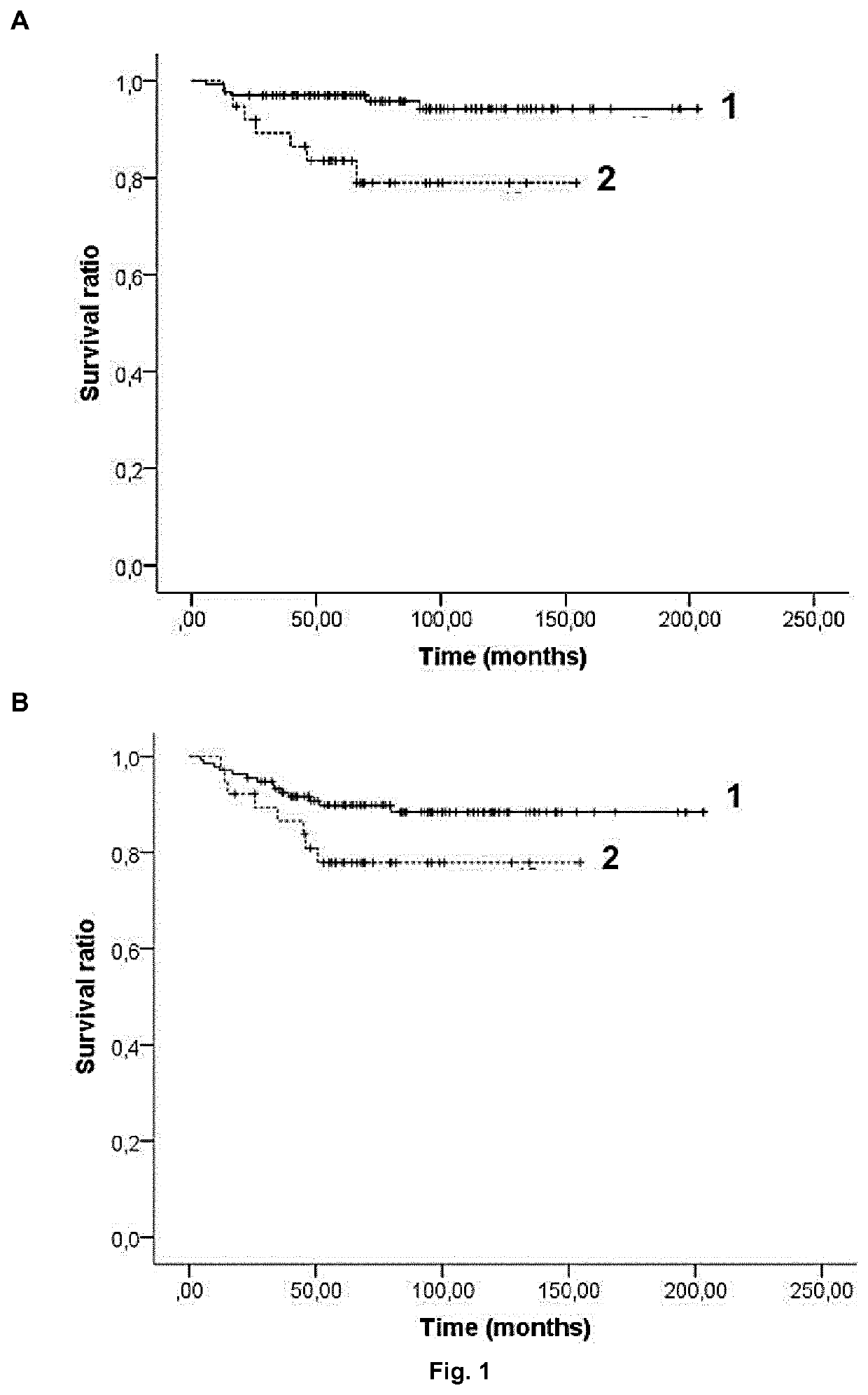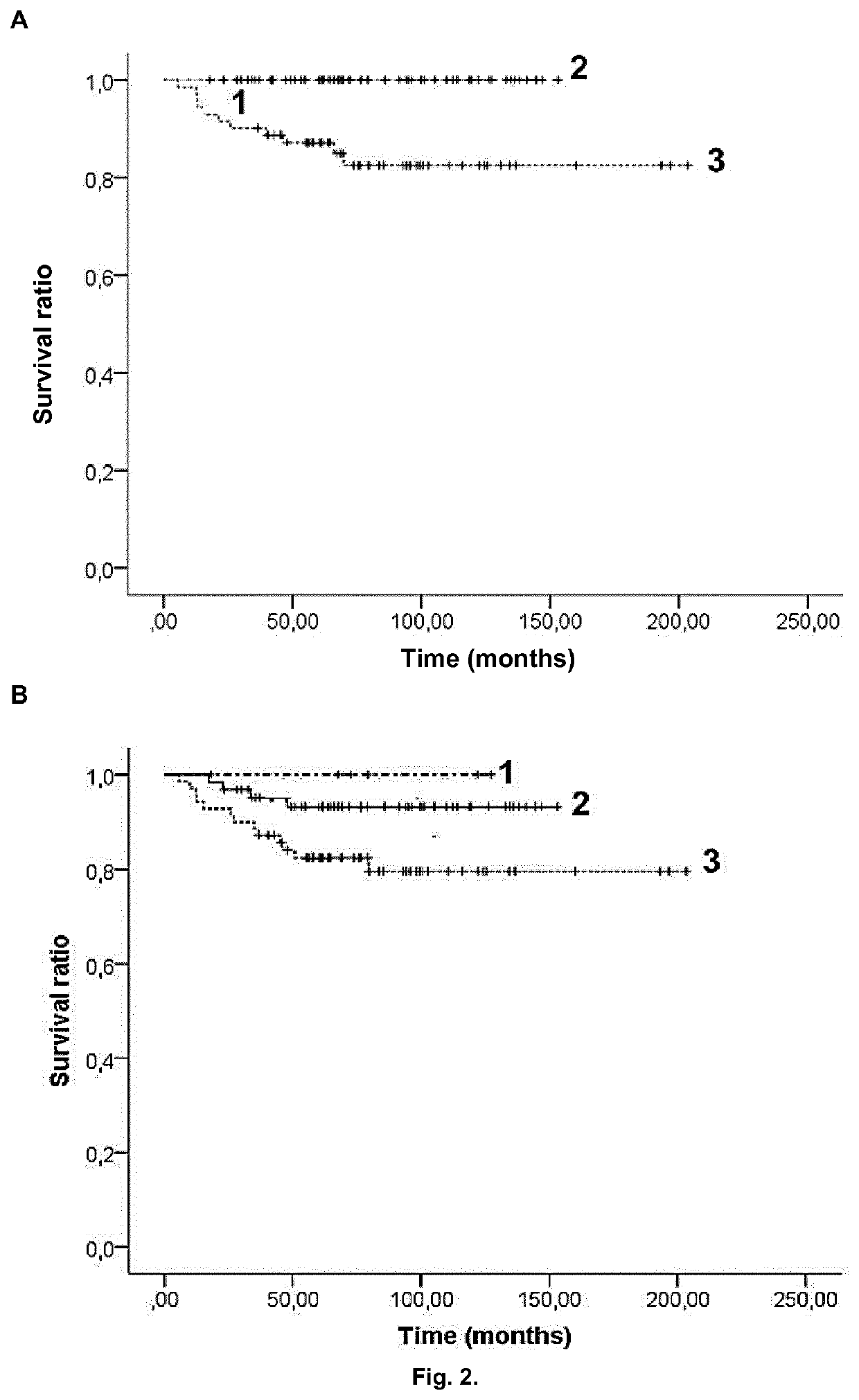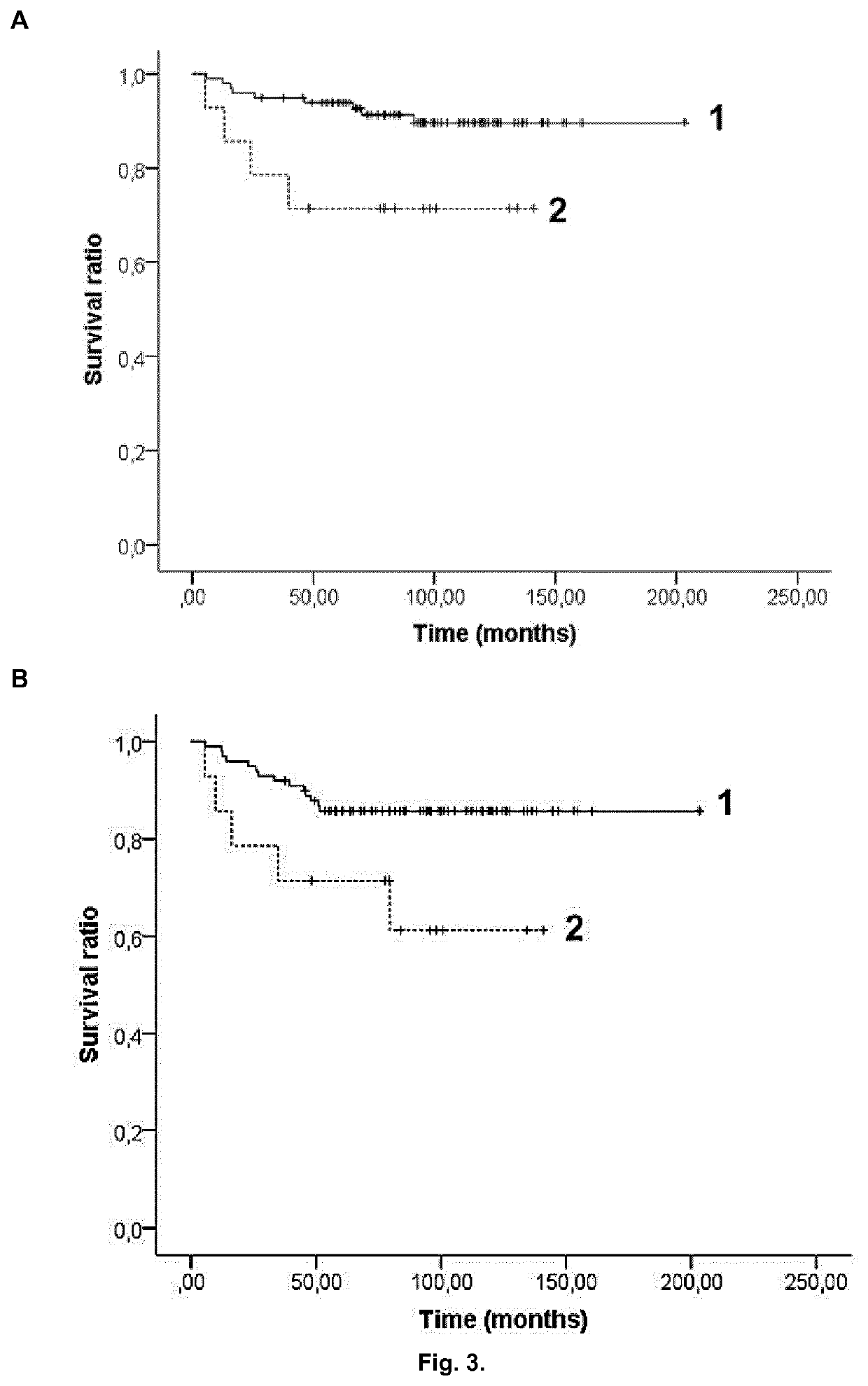Method for predicting survival in children with acute lymphoblastic leukemia
a lymphoblastic leukemia and survival prediction technology, applied in the field of survival prediction in children with acute lymphoblastic leukemia, can solve the problems of underlying all-out allelic variants, low drug exposure, and still controversial
- Summary
- Abstract
- Description
- Claims
- Application Information
AI Technical Summary
Benefits of technology
Problems solved by technology
Method used
Image
Examples
example 1
I. Materials and Methods
[0079]Patients
[0080]One hundred and seventy-three patients diagnosed with ALL and younger than 18 years were recruited from Sant Joan de Déu Hospital, Barcelona, Spain and from Cruces Hospital, Barakaldo, Spain between 1996 and 2012. Patients were all from Caucasian descent. All their parents were informed about the study and they provided their consent in accordance with the Declaration of Helsinki. The research was approved by the ethics committees of all participant hospitals. Samples were extracted when patients were at complete remission or without cytogenetic aberrations affecting chromosomes where the polymorphisms are located. Clinical data were collected at diagnosis, including sex, age, leukemia type (T-cell, B-cell or mixed), WBC count, cytogenetic risk group and treatment protocol (Table 1).
[0081]The different cytogenetic risk groups were classified according to the criteria from the Spanish Society of Pediatric Hematology and Oncology as follow: ...
PUM
| Property | Measurement | Unit |
|---|---|---|
| volume | aaaaa | aaaaa |
| volume | aaaaa | aaaaa |
| temperature | aaaaa | aaaaa |
Abstract
Description
Claims
Application Information
 Login to View More
Login to View More - R&D
- Intellectual Property
- Life Sciences
- Materials
- Tech Scout
- Unparalleled Data Quality
- Higher Quality Content
- 60% Fewer Hallucinations
Browse by: Latest US Patents, China's latest patents, Technical Efficacy Thesaurus, Application Domain, Technology Topic, Popular Technical Reports.
© 2025 PatSnap. All rights reserved.Legal|Privacy policy|Modern Slavery Act Transparency Statement|Sitemap|About US| Contact US: help@patsnap.com



